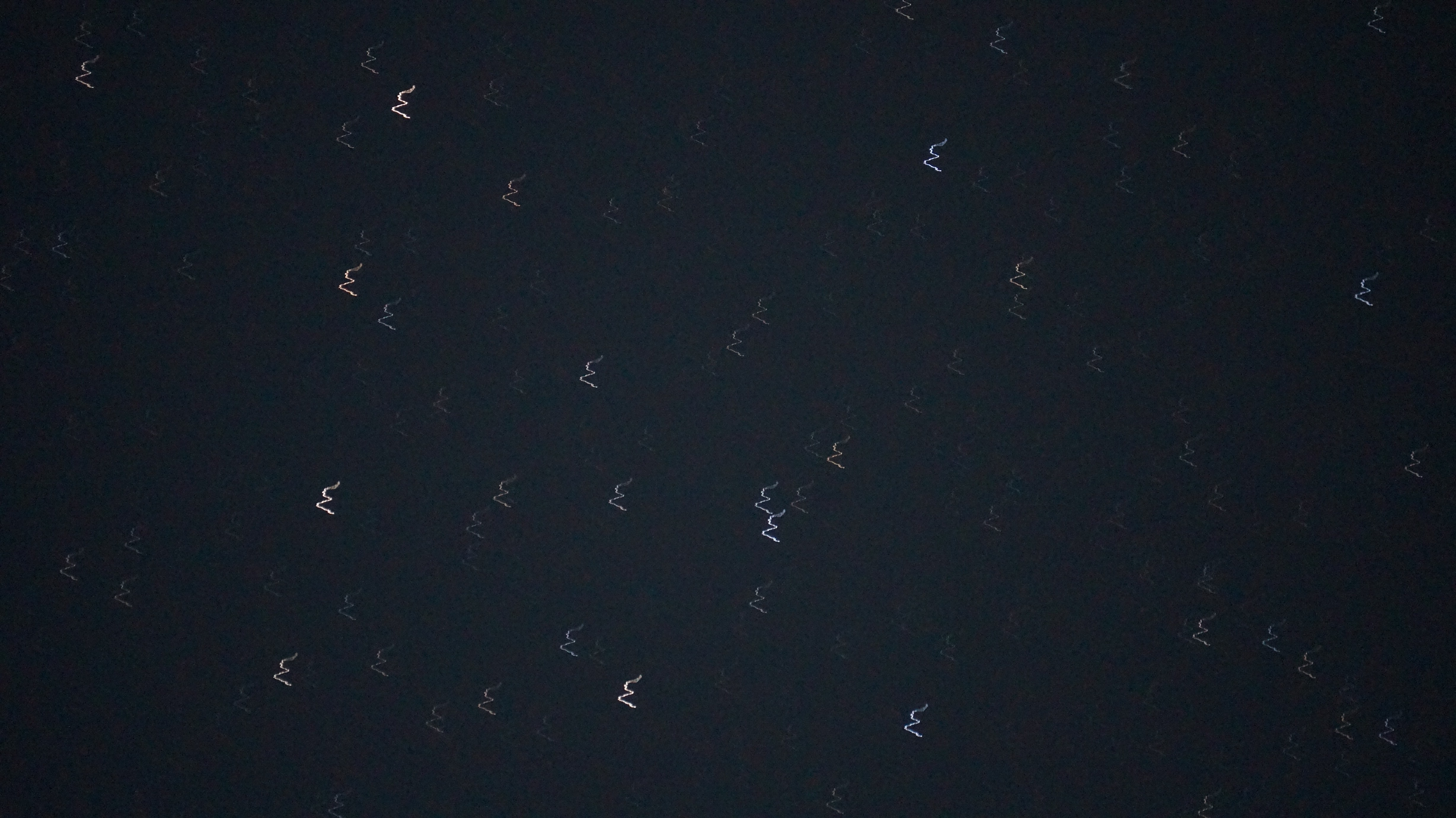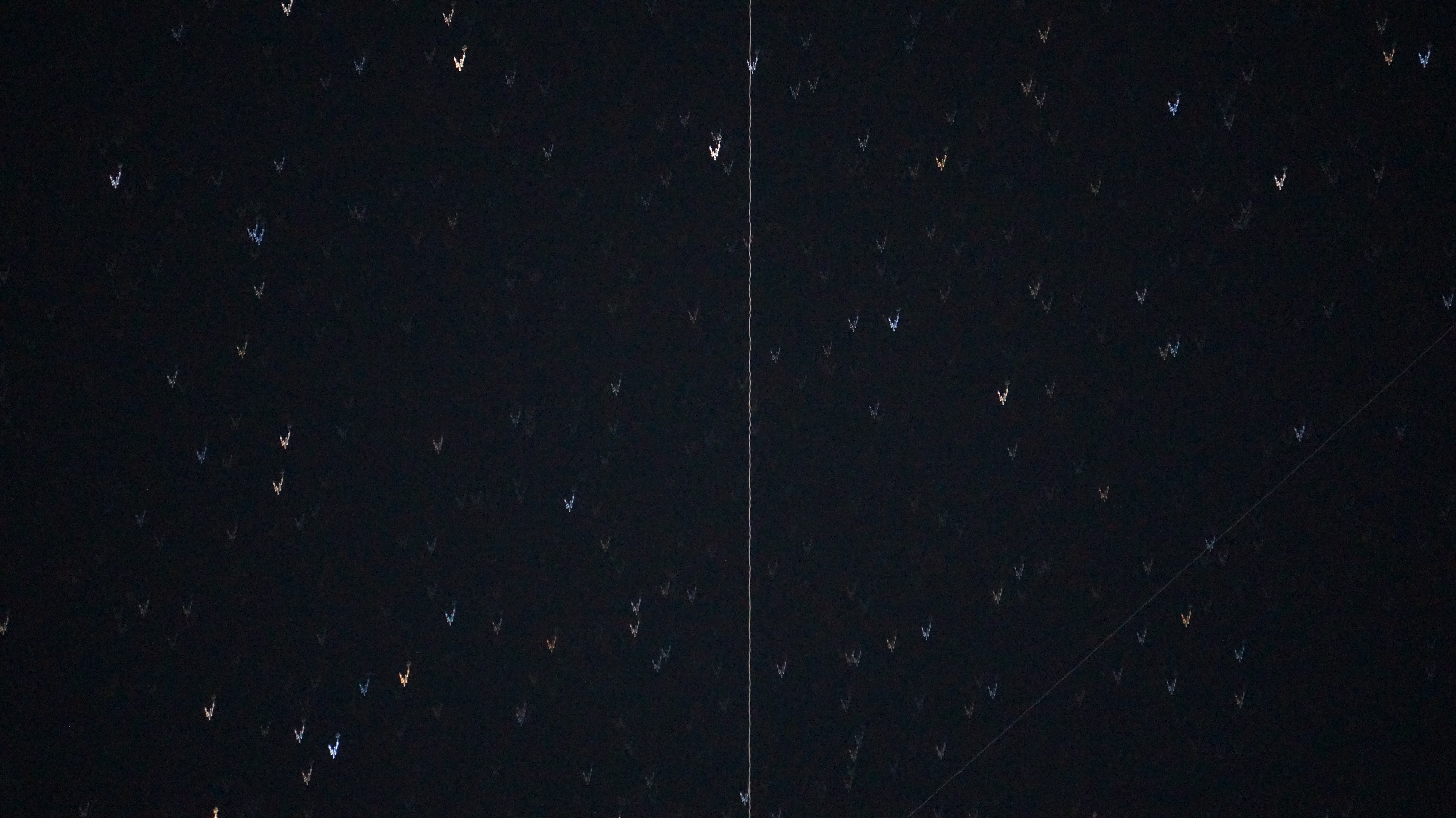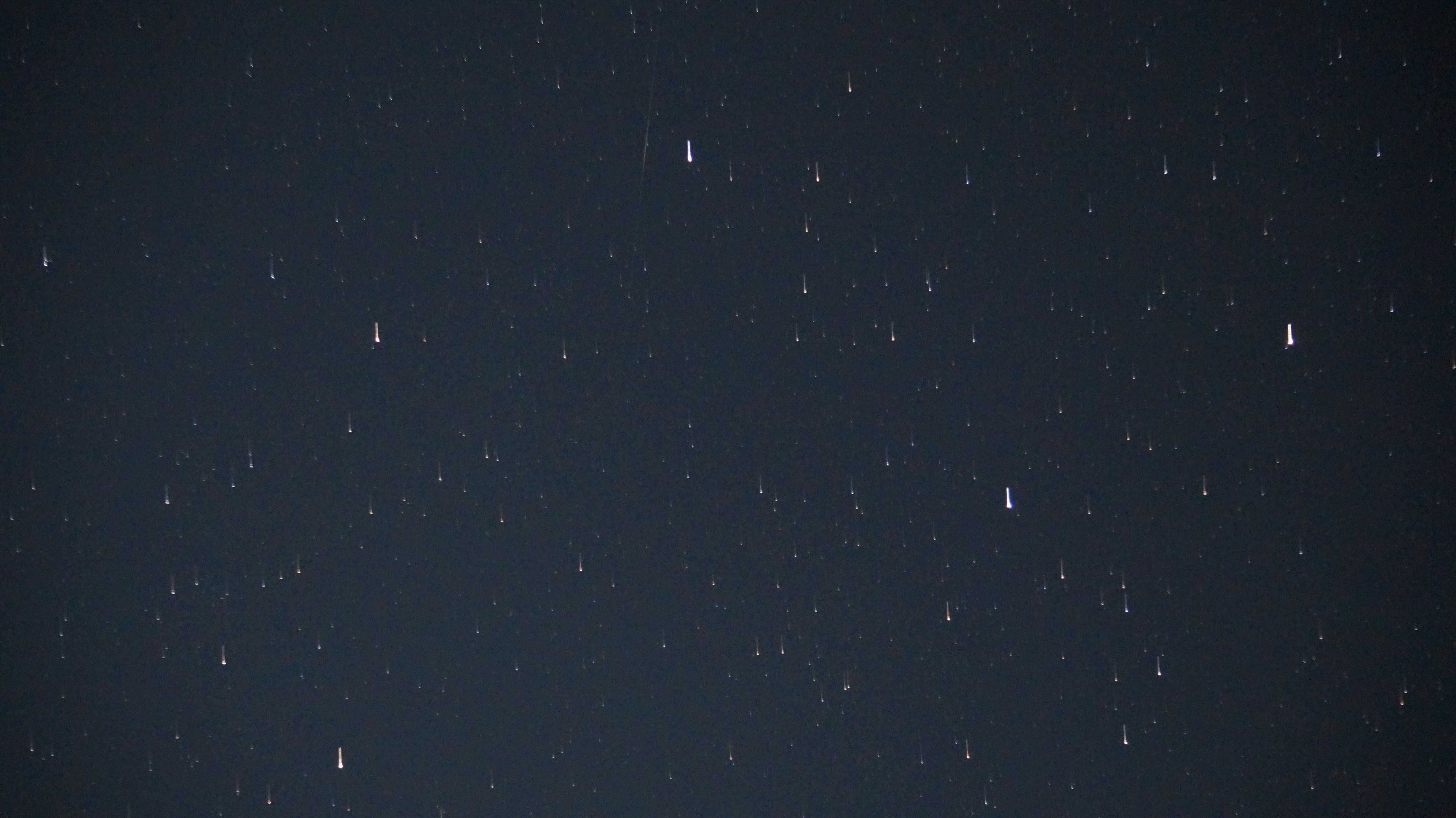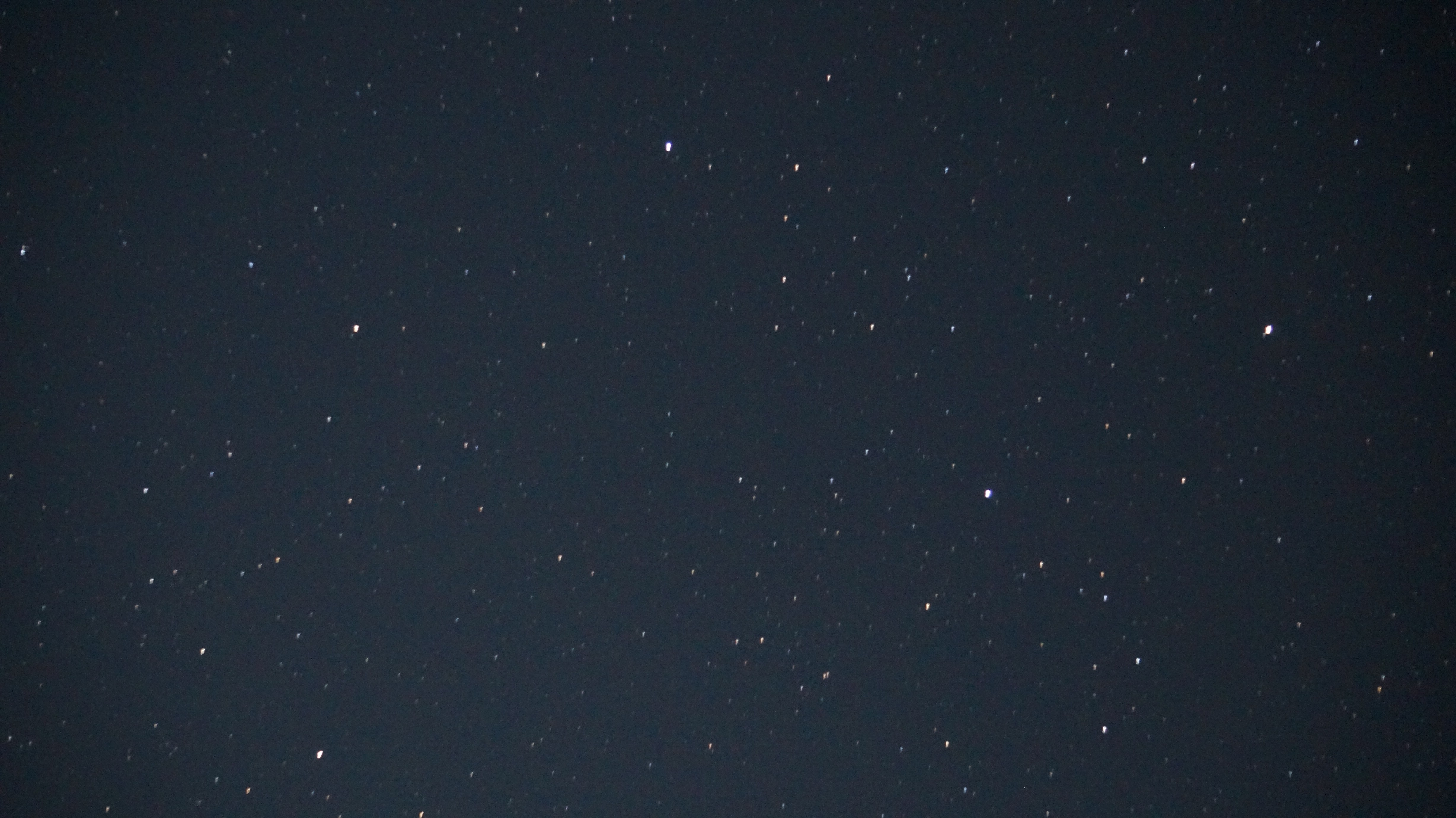I finally got out away from the city and was able to do some testing. For this, I mounted the star tracker on a small, but stable tripod. I used my Sony Nex-6 mirrorless camera with 210mm telephoto lens. No celestial objects were focused on in particular, as this early testing was focused on function first.
Alignment Challenges
Since this design is a simple, "dumb," single-axis tracker, it must be well aligned to work properly. Effectively, the axis of rotation of the tracker must be aligned with the Earth's axis of rotation. Then, the tracker can rotate at 15deg/hour and counteract the Earth's rotation. If not properly aligned, star trails will still be an issue.
This is certainly an area of possible improvement. I used a compass app and a star app to determine where to point the system. In the northern hemisphere, pointing the axis at Polaris does a fairly good job. However, without "sights" on my tracker, this is fairly difficult.
Learning Settings
The other challenges I faced were settings related. I had never used my telephoto lens for astrophotography before, and it raised some challenges. The most significant was focusing. Unlike a DSLR where you can look directly through the optics to focus, mirrorless cameras provide a rendered view through their electronic viewfinders (EVF). In dark situations, this doesn't work well, so focusing can be difficult. You can counteract this somewhat by focusing on a very bright star, planet, or the moon, where the EVF will be able to show the object. However, my telephoto lens has electronic focus, and the focus ring is not physically controlling focus. It is basically a knob that can continually rotate. This makes it very difficult to finely tune the focus and to maintain focus.
I also spent some time adjusting exposure time, ISO, and other settings to get decent amounts of light.
Camera Vibration
I had set my camera to wait 2 seconds after pressing the shutter button to begin the image. This is to avoid moving the camera while pressing it. It seemed this is not long enough. My setup does not seem stiff enough, so it deflects a noticeable amount. This is seen in the star trails that are not straight, but zigzag due to vibrations. Moving to an IR trigger would help a lot.
Example Results
These photos are not great, but were a good lesson in the challenges of this setup. They are all unedited from the camera.
Some of the images show very clear vibration of the camera. It is unclear yet if this is from pressing the shutter button, or actuation.

I also caught a satellite coming across the FOV, with vibration still visible here.

That said, it was very clear that the tracking was helping. The below images show without and with tracking, respectively. While a bit out of focus and with poor balance, the second image is close to the goals of this project, preventing most of the star trails.


Discussions
Become a Hackaday.io Member
Create an account to leave a comment. Already have an account? Log In.